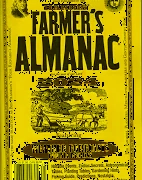Allow Me to Introduce New Terminology

Before browsing through a magazine handout at the grocery store called alive.com, I’d never heard the term “immunity debt”, and curiosity led me through an entire article by Dr. Gillian Flower. The thesis – our immune systems need exposure to viruses to protect us from infection, and lower exposure to others through the pandemic may have decreased our resistance, creating an “immunity debt”.
Apparently, not everyone agrees. “Immunity debt is a misguided and dangerous concept,” Anjana Ahuja writes in Financial Times. “There is no evidence that an individual is worse off for having avoided earlier infection.”
While I am certainly not qualified to weigh in on this medical discussion, as a content writer I was impressed by the fact that by simply introducing me to a new term, the author had the power to engage my curiosity about the subject.
In blog marketing, once you’ve established common ground, reinforcing to readers that they’ve come to the right place, it’s important to add lesser-known bits of information on your subject, which might take the form of arming readers with new terminology, serving several purposes:
- positioning the business owner or professional practitioner as an expert in the field
- adding value to the “visit” for the reader
- increasing readers’ sense of being part of an “in-the-know” group
As content writers, part of our challenge is to educate both prospects and clients on the issues relating to their decisions to choose between one business’ products and services and those of its competitors. Introducing a curiosity-stimulating new term is one possible way to do just that. At Say it For You, we believe in empowering readers by teaching them the correct use of the terms that apply in the blog sponsor’s field of interest and expertise. Any hint of controversy only adds to the mystique of the terminology.
Most important, buyers feel empowered to make a decision when they feel “in on” the “lingo”.





Follow us online!